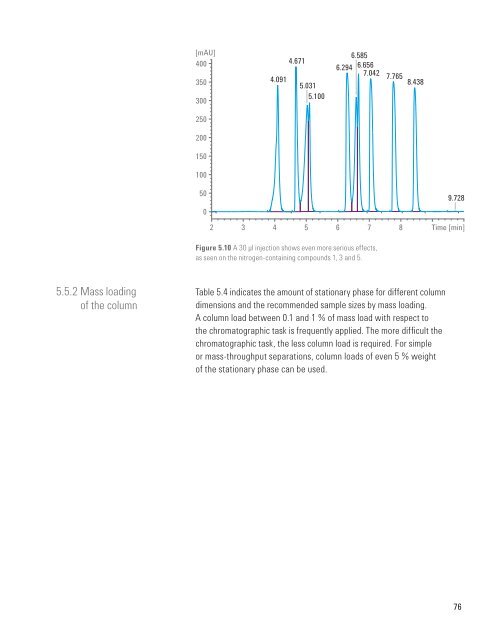Principles and Practical Aspects of Preparative Liquid Chromatography
Create successful ePaper yourself
Turn your PDF publications into a flip-book with our unique Google optimized e-Paper software.
[mAU]<br />
400<br />
350<br />
300<br />
250<br />
200<br />
150<br />
100<br />
50<br />
0<br />
4.091<br />
4.671<br />
5.031<br />
5.100<br />
6.585<br />
6.294 6.656<br />
7.042 7.765 8.438<br />
9.728<br />
2<br />
3 4 5 6 7 8<br />
Time [min]<br />
Figure 5.10 A 30 µl injection shows even more serious effects,<br />
as seen on the nitrogen-containing compounds 1, 3 <strong>and</strong> 5.<br />
5.5.2 Mass loading<br />
<strong>of</strong> the column<br />
Table 5.4 indicates the amount <strong>of</strong> stationary phase for different column<br />
dimensions <strong>and</strong> the recommended sample sizes by mass loading.<br />
A column load between 0.1 <strong>and</strong> 1 % <strong>of</strong> mass load with respect to<br />
the chromatographic task is frequently applied. The more difficult the<br />
chromatographic task, the less column load is required. For simple<br />
or mass-throughput separations, column loads <strong>of</strong> even 5 % weight<br />
<strong>of</strong> the stationary phase can be used.<br />
76



